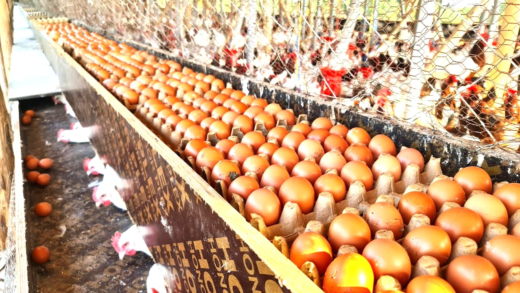This article explores prokaryotic and eukaryotic cells, highlighting their differences, structures, and importance. Prokaryotic cells, likened to efficiency apartments, are simple yet effective, while eukaryotic cells, compared to mansions, are complex and specialized. Understanding these cell types is crucial for appreciating biological diversity and advancements in science.
What Are Prokaryotic Cells: Let’s Break It Down
Prokaryotic cells are the simplest forms of life. They lack a nucleus and membrane-bound organelles, making them different from their more complex counterparts, eukaryotic cells. Imagine a prokaryotic cell as a tiny efficiency apartment—compact and functional. These cells are usually single-celled organisms, such as bacteria. They perform all necessary functions of life within a single cell, showcasing efficiency in their operations.
Examples of Prokaryotic Cells: Who’s Who in the Prokaryotic World
When discussing prokaryotic cells, examples are key. The most common types include:
- Bacteria: These are everywhere, from our skin to the soil. They play crucial roles in processes like decomposition and digestion.
- Archaea: Often found in extreme environments like hot springs or salty lakes, these microbes are tough cookies, thriving where most life can’t.
Both of these examples highlight the diversity and adaptability of prokaryotic cells.
What Are Eukaryotic Cells: The Upscale Version
Eukaryotic cells are the sophisticated relatives of prokaryotic cells. They have a nucleus that houses their genetic material and various organelles that perform specialized functions. Think of eukaryotic cells as mansions—spacious and packed with features. This complexity allows eukaryotic cells to support larger organisms, including plants and animals.
Examples of Eukaryotic Cells: Meet the Eukaryotes
Examples of eukaryotic cells are abundant and include:
- Animal Cells: Found in all animals, these cells are responsible for a variety of functions, from muscle contraction to nerve signaling.
- Plant Cells: These cells have a rigid cell wall and chloroplasts for photosynthesis, allowing plants to harness sunlight.
- Fungal Cells: Found in mushrooms and yeast, these cells play a key role in decomposition and nutrient cycling.
Each type of eukaryotic cell serves its unique purpose, contributing to the overall ecosystem.
Differences Between Prokaryotic and Eukaryotic Cells: The Main Showdown
The differences between prokaryotic and eukaryotic cells are significant and can be easily observed. First off, prokaryotic cells are generally smaller than eukaryotic cells. While a prokaryotic cell averages about 0.1 to 5.0 micrometers, eukaryotic cells range from 10 to 100 micrometers. This size difference can lead to various functional implications.
Next, let’s talk about structure. Prokaryotic cells lack a nucleus. Their genetic material is located in a region called the nucleoid, while eukaryotic cells have a defined nucleus enclosed by a nuclear membrane. Additionally, prokaryotic cells often have a simpler structure, consisting mainly of a cell membrane, cell wall, and cytoplasm, while eukaryotic cells are equipped with organelles like mitochondria, endoplasmic reticulum, and Golgi apparatus.
Another critical difference is in reproduction. Prokaryotic cells reproduce asexually through binary fission, a straightforward process. Eukaryotic cells, on the other hand, can reproduce both asexually and sexually, which adds a layer of complexity to their life cycles.
Lastly, the metabolic processes in these cells vary. Prokaryotic cells can be autotrophic or heterotrophic, whereas eukaryotic cells have more specialized metabolic pathways, enabling them to perform complex functions. Understanding these differences is essential for appreciating the diversity of life.
Structure of Prokaryotic Cells: A Closer Look
The structure of prokaryotic cells is fascinating in its simplicity. As mentioned earlier, prokaryotic cells lack a nucleus. Instead, they contain a single circular chromosome located in the nucleoid region. This genetic setup allows for quick replication and efficient cellular function.
Prokaryotic cells are surrounded by a rigid cell wall, which provides shape and protection. This wall is made of peptidoglycan in bacteria, giving them their characteristic structure. Additionally, many prokaryotes have a capsule outside the cell wall that helps them evade the immune system.
Inside, the cytoplasm contains ribosomes, which are essential for protein synthesis. These ribosomes are smaller than those found in eukaryotic cells, allowing for rapid protein production. The absence of membrane-bound organelles means that all cellular processes occur within the cytoplasm, making prokaryotic cells incredibly efficient, like a well-organized studio apartment.
Structure of Eukaryotic Cells: The Mansion Analogy
Eukaryotic cells are often compared to mansions due to their complex and spacious structure. Unlike prokaryotic cells, eukaryotic cells have a well-defined nucleus that houses their DNA. This separation allows for more sophisticated regulation of genetic material.
Within the eukaryotic cell, various organelles perform specialized functions. For instance, mitochondria are the powerhouses, generating energy through cellular respiration. The endoplasmic reticulum (ER) is responsible for synthesizing proteins and lipids, while the Golgi apparatus modifies and packages these molecules for transport.
Plant cells, a type of eukaryotic cell, have additional features like a rigid cell wall and chloroplasts for photosynthesis. This structural complexity allows eukaryotic cells to support larger organisms and perform more intricate tasks, much like a mansion filled with rooms for different purposes.
Functions of Eukaryotic Cell Parts: What Does Each Part Do?
Understanding the functions of eukaryotic cell parts is crucial to grasping how these cells operate. Each organelle plays a specific role that contributes to the cell’s overall functionality:
- Nucleus: The control center of the cell, it stores genetic information and regulates cellular activities.
- Mitochondria: Known as the powerhouse, they convert nutrients into energy through respiration.
- Endoplasmic Reticulum (ER): The rough ER is studded with ribosomes for protein synthesis, while the smooth ER synthesizes lipids.
- Golgi Apparatus: This organelle modifies, sorts, and packages proteins and lipids for secretion or use within the cell.
- Ribosomes: These tiny structures are essential for protein synthesis, translating genetic information into functional proteins.
Each of these parts works in harmony, allowing eukaryotic cells to perform complex functions and maintain life efficiently.
Prokaryotic Cells as Efficiency Apartments: Why This Analogy?
Prokaryotic cells are often likened to efficiency apartments due to their compact and highly functional design. Just like an efficiency apartment maximizes every square inch of space, prokaryotic cells utilize their limited structure to perform all necessary life functions. These cells are single-celled organisms, primarily bacteria, that operate without the luxury of membrane-bound organelles. This efficiency is essential for survival in various environments.
In an efficiency apartment, everything you need is within arm’s reach, which mirrors how prokaryotic cells efficiently carry out essential processes. For instance, they can quickly replicate their DNA and reproduce through binary fission, making them incredibly adaptable and resilient. Furthermore, prokaryotic cells often thrive in extreme conditions, showcasing their ability to maximize resources—much like how an apartment dweller might adapt their living space for comfort and functionality.
Eukaryotic Cells as Mansions: The Bigger Picture
Eukaryotic cells, in contrast, can be viewed as mansions. This analogy highlights their complex structure and the variety of specialized functions they perform. Just as a mansion has multiple rooms designed for different purposes, eukaryotic cells contain various organelles, each with its specific role. For example, mitochondria generate energy, while the endoplasmic reticulum synthesizes proteins and lipids.
This structural complexity allows eukaryotic cells to support larger organisms, such as plants and animals, and perform intricate tasks that prokaryotic cells cannot. The presence of a nucleus, which houses genetic material, also adds a layer of organization that enhances their functionality. Therefore, understanding eukaryotic cells as mansions provides a clearer picture of their capabilities and significance in the biological world.
Importance of Understanding Cell Types: Why Bother?
Knowing the differences between prokaryotic and eukaryotic cells is crucial for several reasons. Firstly, it enhances our understanding of the diversity of life on Earth. Prokaryotic cells are fundamental to many ecosystems, performing essential functions like decomposition and nutrient cycling. In contrast, eukaryotic cells form the basis of complex organisms, including humans.
Moreover, understanding these cell types aids in various scientific fields, such as medicine and biotechnology. For example, many antibiotics target prokaryotic cells without affecting eukaryotic cells, demonstrating the importance of this knowledge in developing treatments. Additionally, insights into cell structures and functions can lead to advancements in genetic engineering and synthetic biology.
In conclusion, recognizing the distinctions between prokaryotic and eukaryotic cells not only enriches our comprehension of biology but also has practical implications in health, industry, and environmental science.





Comments are closed.